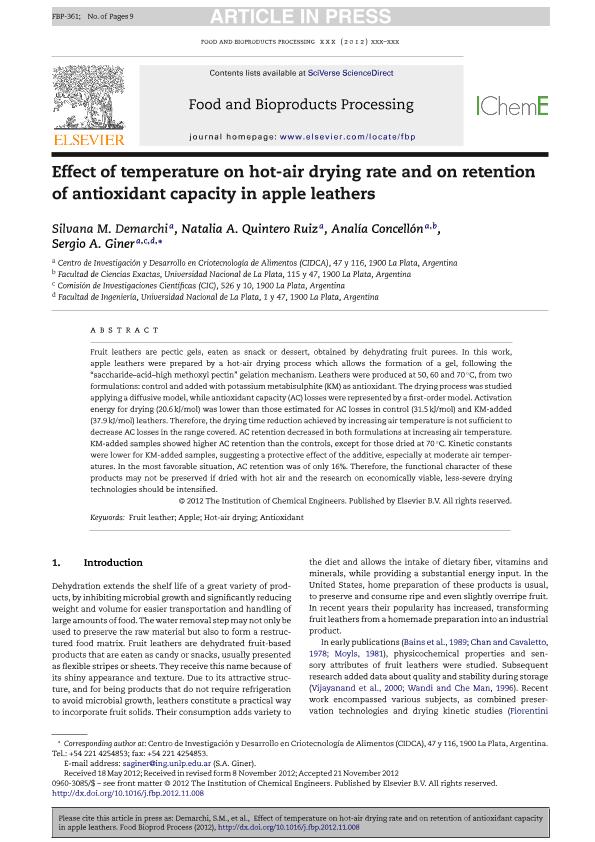Artículo
Effect of temperature on hot-air drying rate and on retention of antioxidant capacity in apple leathers
Fecha de publicación:
10/2013
Editorial:
Elsevier
Revista:
Food And Bioproducts Processing
ISSN:
0960-3085
Idioma:
Inglés
Tipo de recurso:
Artículo publicado
Clasificación temática:
Resumen
Fruit leathers are pectic gels, eaten as snack or dessert, obtained by dehydrating fruit purees. In this work, apple leathers were prepared by a hot-air drying process which allows the formation of a gel, following the “saccharide–acid–high methoxyl pectin” gelation mechanism. Leathers were produced at 50, 60 and 70 °C, from two formulations: control and added with potassium metabisulphite (KM) as antioxidant. The drying process was studied applying a diffusive model, while antioxidant capacity (AC) losses were represented by a first-order model. Activation energy for drying (20.6 kJ/mol) was lower than those estimated for AC losses in control (31.5 kJ/mol) and KM-added (37.9 kJ/mol) leathers. Therefore, the drying time reduction achieved by increasing air temperature is not sufficient to decrease AC losses in the range covered. AC retention decreased in both formulations at increasing air temperature. KM-added samples showed higher AC retention than the controls, except for those dried at 70 °C. Kinetic constants were lower for KM-added samples, suggesting a protective effect of the additive, especially at moderate air temperatures. In the most favorable situation, AC retention was of only 16%. Therefore, the functional character of these products may not be preserved if dried with hot air and the research on economically viable, less-severe drying technologies should be intensified.
Palabras clave:
Fruit Leather
,
Apple
,
Hot-Air Drying
,
Antioxidant
Archivos asociados
Licencia
Identificadores
Colecciones
Articulos(CIDCA)
Articulos de CENTRO DE INV EN CRIOTECNOLOGIA DE ALIMENTOS (I)
Articulos de CENTRO DE INV EN CRIOTECNOLOGIA DE ALIMENTOS (I)
Citación
Demarchi, Silvana María; Quintero Ruiz, Natalia Andrea; Concellón, Analía; Giner, Sergio A.; Effect of temperature on hot-air drying rate and on retention of antioxidant capacity in apple leathers; Elsevier; Food And Bioproducts Processing; 91; 4; 10-2013; 310-318
Compartir
Altmétricas




